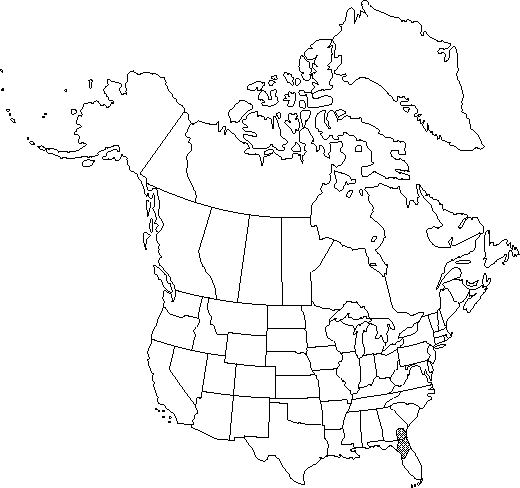Asimina incana
J. Bot. 65: 69. 1927.
Shrubs, to 1.5 m. Branches copious, stiff; shoots redbrown or tan with dense, pale tomentum, maturing tomentose only distally. Leaves: petiole 2-6 mm. Leaf-blade oblong to obovate, 5-8c m, leathery, base round to abruptly broadly cuneate, margins obscurely revolute, apex obtuse to rounded, often notched; surfaces abaxially and adaxially densely tomentose with pale blond or tan hairs, becoming moderately or weakly so. Inflorescences from previous years growth; peduncle 2-3.5 cm, pale-tomentous; bracteoles 1-2, basal, usually ovate-triangular, rarely more than 2-3 mm, hairy. Flowers 1-4 per node, fragrant, large; sepals triangular-deltate, 8-12 mm, abaxially pale-tomentose; outer petals 3 (-4), white or cream, ovate to oblong or obovate, 3.5-7 cm, abaxially pale-puberulent, veins impressed adaxially; inner petals yellow-white, lance-hastate, 1/3-1/2 length of outer petals, base saccate, adaxially deep yellow corrugate zone; pistils 3-5 (-11). Berries yellow-green, to 8 cm. Seeds pale to rich brown, dull, 1-2 cm. 2n=18.
Phenology: Flowering spring–early summer.
Habitat: Sands or sandy loams, upland oak-pineland, pastures, disturbed sandy sites, mostly in longleaf pine-turkey oak systems
Elevation: 0-150 m
Discussion
Asimina incana hybridizes with A. longifolia and A. reticulata, and possibly A. pygmaea.
Selected References
None.
